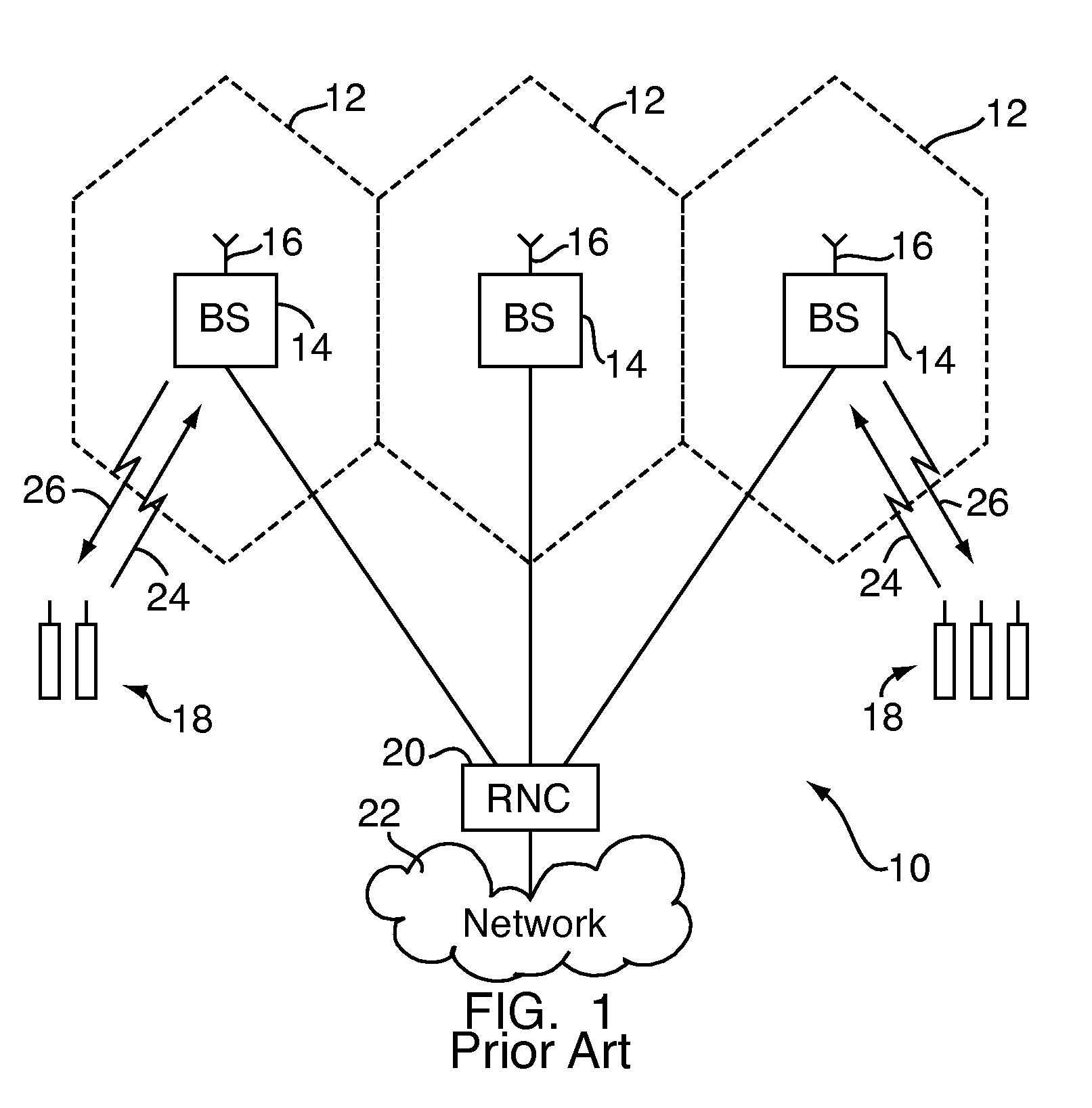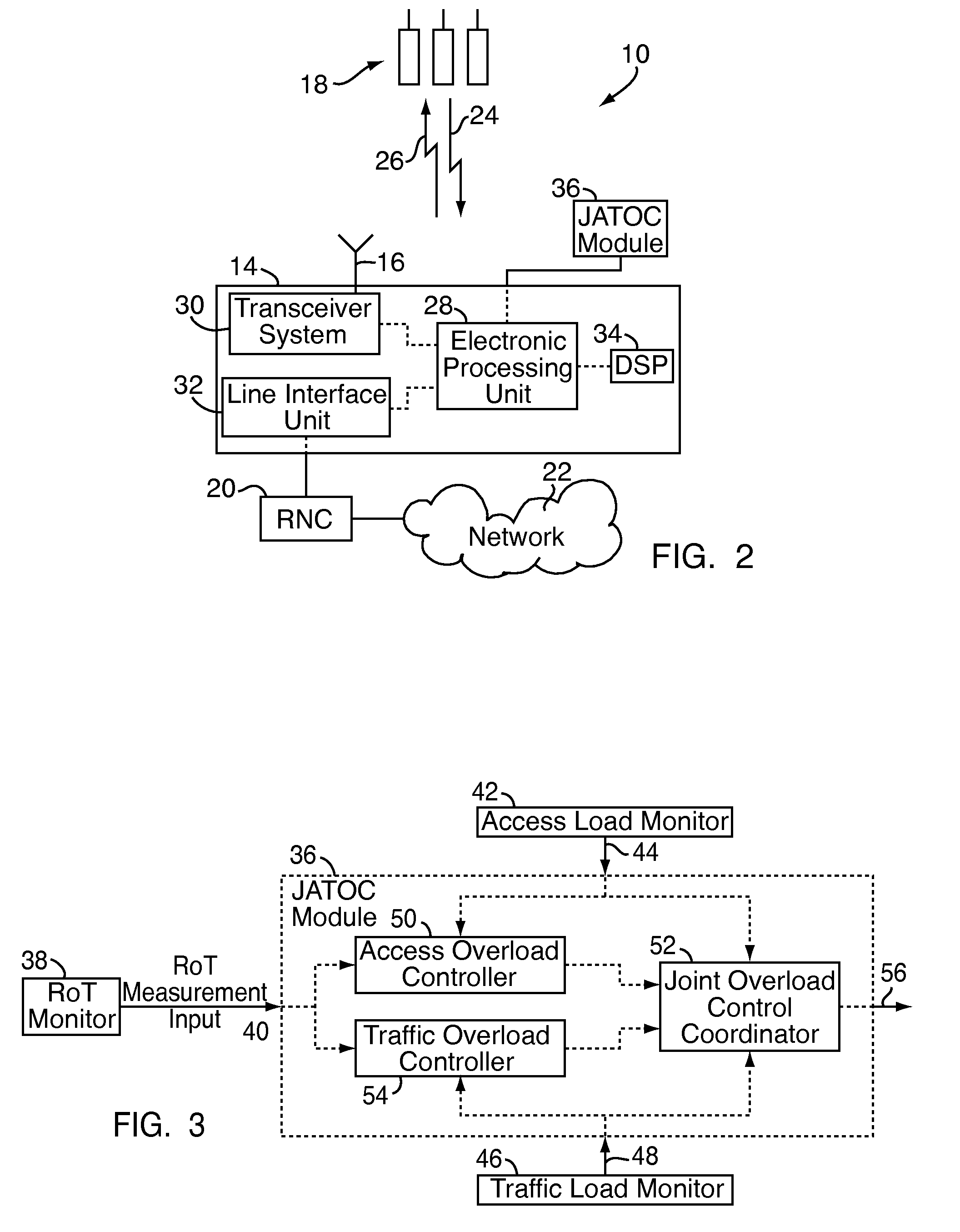Method and system for joint reverse link access and traffic channel radio frequency overload control
a radio frequency overload control and traffic channel technology, applied in the field of wireless communication system load control, can solve the problems of less controllable access channel rot contributions, and unpredictable whether access channel or traffic channel will contribute more to rot, so as to optimize resource utilization and distribution, and reduce the total load of the cellular network reverse link
- Summary
- Abstract
- Description
- Claims
- Application Information
AI Technical Summary
Benefits of technology
Problems solved by technology
Method used
Image
Examples
Embodiment Construction
[0015]Referring to FIG. 2, an embodiment of the present invention relates to a method and system for joint reverse link access and traffic channel overload control to optimize resource utilization and distribution among different types of users in cellular network. The cellular network 10 includes one or more base stations 14 that wirelessly communicate with a number of mobile devices 18 over a reverse link 24 (i.e., mobile device to base station link) and a forward link 26 (i.e., base station to mobile device link) according to a CDMA or other communications protocol.
[0016]The mobile devices 18 may include, for example, mobile phones, wireless PDA's, wireless devices with high-speed data transfer capabilities, such as those compliant with “3-G” or “4-G” standards, “WiFi” -equipped computer terminals, and the like.
[0017]As indicated in FIG. 2, the base station 14 will typically be connected to an RNC 20, which will in turn be connected to additional base stations (not shown) and one...
PUM
 Login to View More
Login to View More Abstract
Description
Claims
Application Information
 Login to View More
Login to View More - R&D
- Intellectual Property
- Life Sciences
- Materials
- Tech Scout
- Unparalleled Data Quality
- Higher Quality Content
- 60% Fewer Hallucinations
Browse by: Latest US Patents, China's latest patents, Technical Efficacy Thesaurus, Application Domain, Technology Topic, Popular Technical Reports.
© 2025 PatSnap. All rights reserved.Legal|Privacy policy|Modern Slavery Act Transparency Statement|Sitemap|About US| Contact US: help@patsnap.com



